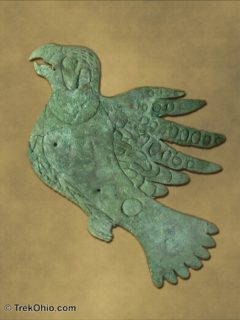 The "Hopewell Culture" refers to a Native American civilization that was centered in Ohio. It flourished here between 200 B.C. and 500 A.D. They are renowned for having built elaborate, huge, earthen structures. However when these mounds were excavated, many artifacts of great artistry were discovered. I would like to share photos of a few of these artifacts, or in some case, replicas of these artifacts. All of them were uncovered at "Mound City" which is where the Hopewell Culture National Historical Read more ➜
The "Hopewell Culture" refers to a Native American civilization that was centered in Ohio. It flourished here between 200 B.C. and 500 A.D. They are renowned for having built elaborate, huge, earthen structures. However when these mounds were excavated, many artifacts of great artistry were discovered. I would like to share photos of a few of these artifacts, or in some case, replicas of these artifacts. All of them were uncovered at "Mound City" which is where the Hopewell Culture National Historical Read more ➜ Hopewell Culture National Historical Park: Native American Artifacts housed in the Museum
 The "Hopewell Culture" refers to a Native American civilization that was centered in Ohio. It flourished here between 200 B.C. and 500 A.D. They are renowned for having built elaborate, huge, earthen structures. However when these mounds were excavated, many artifacts of great artistry were discovered. I would like to share photos of a few of these artifacts, or in some case, replicas of these artifacts. All of them were uncovered at "Mound City" which is where the Hopewell Culture National Historical Read more ➜
The "Hopewell Culture" refers to a Native American civilization that was centered in Ohio. It flourished here between 200 B.C. and 500 A.D. They are renowned for having built elaborate, huge, earthen structures. However when these mounds were excavated, many artifacts of great artistry were discovered. I would like to share photos of a few of these artifacts, or in some case, replicas of these artifacts. All of them were uncovered at "Mound City" which is where the Hopewell Culture National Historical Read more ➜ 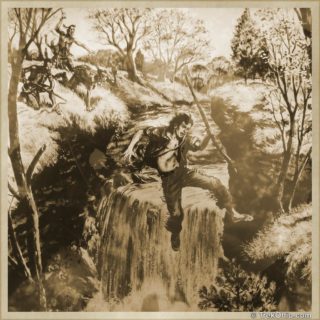 Years ago I went canoeing on the Little Miami River; the river serenely wound its way between the wooded river banks. But at Clifton Gorge, the Little Miami River is something altogether different; it plunges over falls and rapids between narrow cliffs of dolomite and shale. The river and surrounding cliffs are the main attractions of Clifton Gorge State Nature Preserve, a 268 acre preserve located adjacent to John Bryan State Park. The Little Miami River flows through both, with the nature preserve
Years ago I went canoeing on the Little Miami River; the river serenely wound its way between the wooded river banks. But at Clifton Gorge, the Little Miami River is something altogether different; it plunges over falls and rapids between narrow cliffs of dolomite and shale. The river and surrounding cliffs are the main attractions of Clifton Gorge State Nature Preserve, a 268 acre preserve located adjacent to John Bryan State Park. The Little Miami River flows through both, with the nature preserve 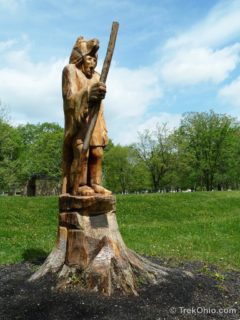 Overview
The Newark Earthworks were constructed about 2000 years ago by the prehistoric, Hopewell people. These are the largest, geometric earthworks in the world. To give you a better sense of the size and shape of these structures, it's best to look at an aerial view. Since I can't take aerial photos myself, I photographed some of the interpretive signs near the earthworks.
The plaque below shows the layout of the Newark Earthworks which occupy four square miles (10.6 square kilometers).
I
Overview
The Newark Earthworks were constructed about 2000 years ago by the prehistoric, Hopewell people. These are the largest, geometric earthworks in the world. To give you a better sense of the size and shape of these structures, it's best to look at an aerial view. Since I can't take aerial photos myself, I photographed some of the interpretive signs near the earthworks.
The plaque below shows the layout of the Newark Earthworks which occupy four square miles (10.6 square kilometers).
I 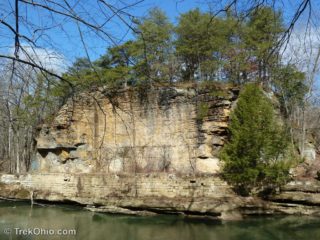 By visiting Blackhand Gorge Nature Preserve, you can trace Ohio's long history of transportation.
Native Americans navigated the Licking River for centuries before the arrival of European settlers. There is a cliff made of Blackhand sandstone rising on the north side of the Licking River. In prehistoric times, Native Americans inscribed a petroglyph on this cliff; it looked like a very large, black hand. Not only is the gorge named after this petroglyph, but the class of erosion-resistant sandstone
By visiting Blackhand Gorge Nature Preserve, you can trace Ohio's long history of transportation.
Native Americans navigated the Licking River for centuries before the arrival of European settlers. There is a cliff made of Blackhand sandstone rising on the north side of the Licking River. In prehistoric times, Native Americans inscribed a petroglyph on this cliff; it looked like a very large, black hand. Not only is the gorge named after this petroglyph, but the class of erosion-resistant sandstone 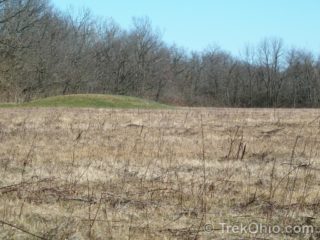 Above you see a little green hill rising above the surrounding plain. This is a man-made structure. The first time I came across anything like this was while reading Tolkien's Lord of the Rings trilogy. There is a dramatic passage in the Fellowship of the Ring when the hobbit heroes are passing through the "Barrow-downs". Tolkien's barrows were mounds like the one above; they had been the final resting place of the ancient men of the first age. In the novel the barrow-downs had been a peaceful place
Above you see a little green hill rising above the surrounding plain. This is a man-made structure. The first time I came across anything like this was while reading Tolkien's Lord of the Rings trilogy. There is a dramatic passage in the Fellowship of the Ring when the hobbit heroes are passing through the "Barrow-downs". Tolkien's barrows were mounds like the one above; they had been the final resting place of the ancient men of the first age. In the novel the barrow-downs had been a peaceful place